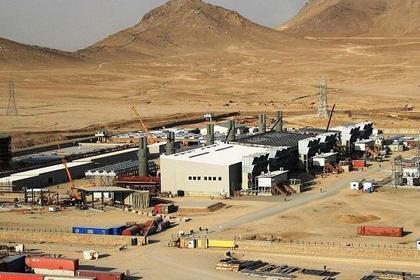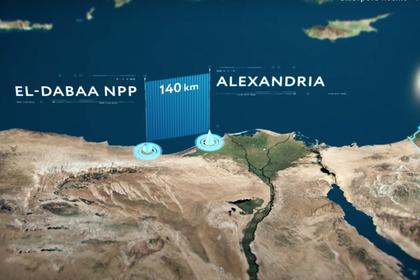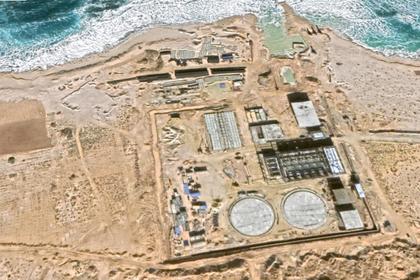
EGYPT CLIMATE STRATEGY 2050

By DR. AMAL KHASHAB Expert Independent Consultant ,Electric Power Systems Engineering Free lancer
ENERGYCENTRAL - Nov 8, 2021 - Egypt National Climate Change Adaptive Strategy 2050
Background
- In relation to the scale and expected scenarios of climate change impacts, the Paris Agreement was adopted to enhance the global action to tackle climate change under the UNFCCC. The agreement entered into force on November 4th, 2016, and the Egyptian parliament ratified it in 2017. Egypt is committed to delivering its fair share of climate actions as part of the global action to tackle climate change.
- Due to Egypt's high vulnerability to climate change, and adapting to the adverse impacts of climate change is an imperative necessity, Egypt prepared its first National Strategy for Climate Change Adaptation and Disaster Risk Reduction in 2011, as well as a Low Emission Development Strategy (LEDS) in 2018, which was prepared to be in line with the National Sustainable Development Strategy NSDS, Egypt Vision 2030.
- Although, there was still a gap to consolidate all aspects of climate change in one strategy to be a basic reference that ensures the integration of climate change dimension into general planning of all sectors in the country. Hence, the National Climate Change Council (NCCC) requested the development of the first comprehensive National Climate Change Strategy (NCCS) for Egypt until 2050.
SWOT Analysis of the Climate Change Management in Egypt
Strength
The conformity of many national strategic plans with the mitigation track of climate change (for example: the strategy of municipal solid waste management)
Existence of climate change units at the Ministry of Electricity and Energy and the Ministry of Petroleum and Mineral Resources
Opportunities
Gradually lifting subsidies on electricity and fuel products
Egypt's leading role in international negotiations on climate change
Implementation of an interactive map of the risks of climate change in Egypt until 2100
Weaknesses
Lack of awareness and weak infrastructure in many areas exposed to the negative impacts of climate change
Weak application of laws and policies as a result of weak institutional capacities and enforcement mechanisms
Limited government funding for mitigation and adaptation measures
Obsolete environmental laws, legislations, and standards and the absence of their update to cope with the local, regional and international development
Weak private sector participation in mitigation and adaptation programs
The absence of a mechanism to ensure the integration of environmental dimensions and principles of sustainable development into sectoral plans, programs, and policies
Threats
Extreme weather events such as flash floods, storms, high temperatures, and sea-level rise
Poverty
Water stress
High increase in population rates, which increases pressure on traditional energy sources
Insufficient international funds are available to developing countries to help them adapt to climate change
The National Climate Change Strategy (NCCS)
It will enable Egypt in planning and govern climate change on different levels in a way that supports the achievement of the desired economic and development goals of the country, following a low emission resilient approach. It puts the well-being of the Egyptian citizen as a priority.
The vision of this Strategy is effectively addressing the impacts of climate change which contributes to improving the quality of life for Egyptian citizens achieving sustainable development and sustainable economic growth, preserving natural resources and ecosystems. A comprehensive, inclusive, and consultative approach was adopted in preparing the strategy. The N
Goal 1:Achieving Sustainable Economic Growth and Low-Emission Development in Various Sectors
Objective (1. a): Energy transition by increasing the share of all renewable and alternative energy sources in the energy mix
Objective (1. b): Reducing emissions associated with the use of fossil fuels
Objective (1.c): Maximizing energy efficiency
Objective (1.d): Adopt sustainable consumption and production trends for reduction of greenhouse gas emissions from other non-energy activities
Goal 2: Enhancing Adaptive Capacity and Resilience to Climate Change, and alleviating the associated negative impacts
Objective (2. a): Protect citizens from the negative health impacts of climate change
Objective (2. b): Minimize loss and damage to country assets and ecosystems by preserving them from the impacts of climate change
Objective (2. c): Preserving the country's resources from the impacts of climate change
Objective (2. d): Resilient infrastructure and services to be able to combat climate change impacts
Objective (2. e): Implementation of disaster risk reduction concepts
Objective (2. f): Preserving and expanding green spaces
Goal 3: Enhancing Climate Change Action Governance
Objective (3. a): Defining the roles and responsibilities of the different stakeholders in order to achieve the strategic goals
Objective (3. b): Improving the rank of Egypt in the international profile of climate change actions to attract further investments and climate finance opportunities
Objective (3. c): Sectoral policy reform to capture the required climate change mitigation and adaptation interventions
Objective (3. d): Enhancing institutional, procedural, and legal arrangements such as Monitoring, Reporting and Verification (MRV) system
Goal 4: Enhancing Climate Financing Infrastructure
Objective (4. a): Promoting local
Objective (4. b): Promoting innovative financing mechanisms prioritizing adaptation actions, e.g., green bonds
Objective (4. c): Private sector engagement in climate finance and promotion of green jobs
Objective (4. d): Compliance with Multilateral Development Banks (MDB) guidelines for climate finance
Objective (4. e): Building on the success of the current climate finance programs
Goal 5: Enhancing Scientific Research, Technology Transfer, Knowledge Management and Awareness to Combat Climate Change
Objective (5. a): Strengthening the role of scientific research and technology transfer in climate change mitigation and adaptation
Objective (5. b): Facilitating the
Objective (5. c): Raising awareness on climate change among different stakeholders (high-level policy, decision-makers, citizens, and students)
Contributing Directions to Achieve the Objectives
-The National Climate Change Strategy NCCS also provided specific directions that contribute to achieving each of the above objectives under each goal as well as general and sector-specific performance indicators.
- For instance, some specific directions that contribute to achieving the objective (1. a) which is energy transition by increasing the share of all renewable and alternative energy sources in the energy mix include but are not limited to:
- Deployment of centralized systems of renewable energy on a large scale such as wind farms, concentrated solar power (CSP), and solar photovoltaic plants
- Promoting small-scale decentralized systems including waste, bio-energy, rooftop photovoltaic solar cells and solar water heaters
- Optimizing the use of renewable energy in off-grid applications
- Inclusion of new alternative energy sources such as green hydrogen
- Increasing the use of renewable energy to generate electricity within industrial facilities
- Applications of solar thermal energy in industrial processes
- Phasing out coal in industrial facilities and switching to low carbon fuels
- Stimulating the increased production and use of biofuels
Enabling Policies and Tools
- Moreover, the strategy incorporates enabling policies and tools for each goal. The policies are divided into existing policies that can be used and built upon and proposed policies that must be developed and adopted. The proposed policies were determined through a SWOT analysis for each goal. Several enabling policies and tools for different goals were proposed in the full document.
- The key policies and tools for the different goals are summarized below:
Goal 1: Achieving Sustainable Economic Growth and Low-Emission Development in Various Sectors
- Developing additional incentive’s policies to expand the use of electric vehicles
- Facilitating the private sector in establishing captive power plants provided that they are highly efficient co-generation power plants or renewable energy power plants
- Expanding the use of natural gas as a feedstock in the petrochemical industry to maximize its value,
- Facilitating the use of solar thermal energy as an alternative energy source in the industrial sector.
- Developing incentive’s policies to encourage the use of biofuels in transport
- Prompt re-assessing all the previously conducted studies and plans related to improving energy efficiency in the industrial sector, and operationalizing the approved ones
- Study various ways to encourage the local manufacture of renewable energy equipment (focusing on solar thermal energy and solar photovoltaic panels) covering all their value
Alleviating the associated negative impacts
- Emphasizing the integration of climate vulnerability maps in the planning process for identifying the location of new projects such as residential and industrial areas and others
- The Ministry of Health and Population to study the expected health impacts as a result of climate change, and then develop and adopt a plan to address these impacts effectively.
- The Ministry of Planning to prioritize projects related to infrastructure upgrading, especially the very old ones, and to increase the coverage of services.
- Building on the policies identified in the National Water Resources Development and Management Strategy 2050 issued by the Ministry of Water Resources and Irrigation to prepare an action plan with a clear timeline to maximize the treatment and recycling of domestic, industrial and agricultural wastewater.
- Developing programs and policies to support the development of rural communities to enhance their resilience to the impacts of climate change, especially land-use change, plant and animal production, and the impact of migration on urban areas
Goal 3: Enhancing Climate Change Action Governance
- Issuing of a Prime-minister decision to form a unit within each of the ministries relevant to climate change to be responsible for managing this topic in light of the National Climate Change Council (NCCC) guidelines
- Each ministry to determine the training needs required for the members of the corresponding climate change, and will be implemented by the Ministry of Environment
- Issuing a clear mandate from the National Climate Change Council (NCCC) for each of the relevant ministries clarifying all roles and responsibilities, including coordination with the governorates
- Preparing forms and templates for annual reports and biennial reports that are required to be filled out by the relevant ministries to summarize the progress of technical and financial work related to mitigation and adaptation projects.
Goal 4: Enhancing Climate Financing Infrastructure
- The National Climate Change Council (NCCC) coordinates with the banking sector to study increasing the facilitation to the projects relevant to climate change.
- The National Climate Change Council (NCCC) to identify priority adaptation and mitigation programs to be included in the Green Bond framework
- The National Climate Change Council (NCCC) to study the requirements of the Multilateral Development Banks MDBs guidelines, develop a clear plan with a timeline to comply with them, and direct each ministry to the most relevant funding bodies.
- Development of small and medium projects entities especially with the most vulnerable groups, such as women in the poorest areas
Goal 5: Enhancing Scientific Research, Technology Transfer, Knowledge Management and Awareness to Combat Climate Change
- Ministry of Education to put climate change topics and raising awareness of its effects as essential parts of school education programs
- Ministry of Higher Education and Scientific Research to include the field of climate change in undergraduate and postgraduate university programs
- Encouraging the establishment of more research institutes and centers specialized in climate change issues, whether at the sectoral level or from multidisciplinary research groups
- The National Climate Change Strategy (NCCS) to develop a system that regulates communication between research centers and ministries so as to share research results until they are converted into projects ready for implementation.
Key Performance Indicators for the NCCS Goals
- Amount of greenhouse gas emissions from all sectors compared to the baseline scenario
- Developing a monitoring and early warning system for the impacts of climate change
- Existence of a crisis management plan related to climate change
- Operationalizing the monitoring, reporting and verification (MRV) system for climate change
- Progress in Climate Change Performance Index (CCPI)
- Percentage of investments directed to the climate sector
- The volume of international financing available to Egypt in the field of climate
- The volume of private sector investments in mitigation and adaptation projects
- Number of environmental awareness campaigns which includes climate issues
Earlier:
















